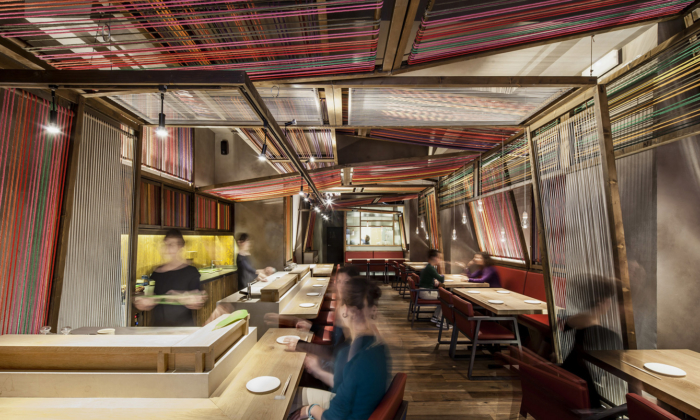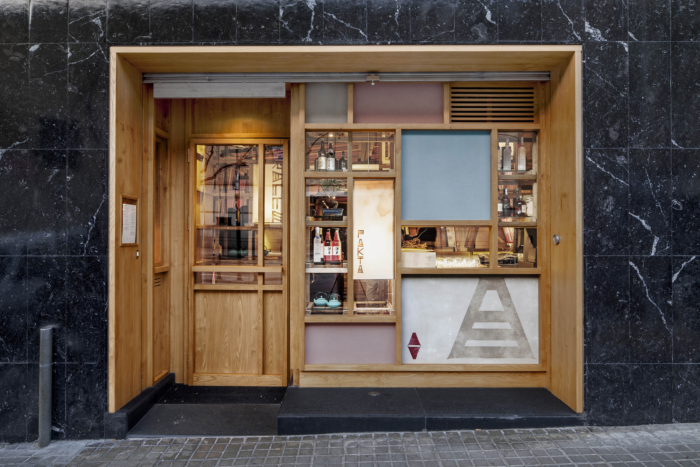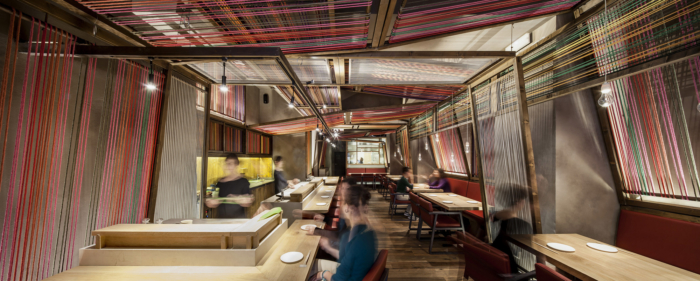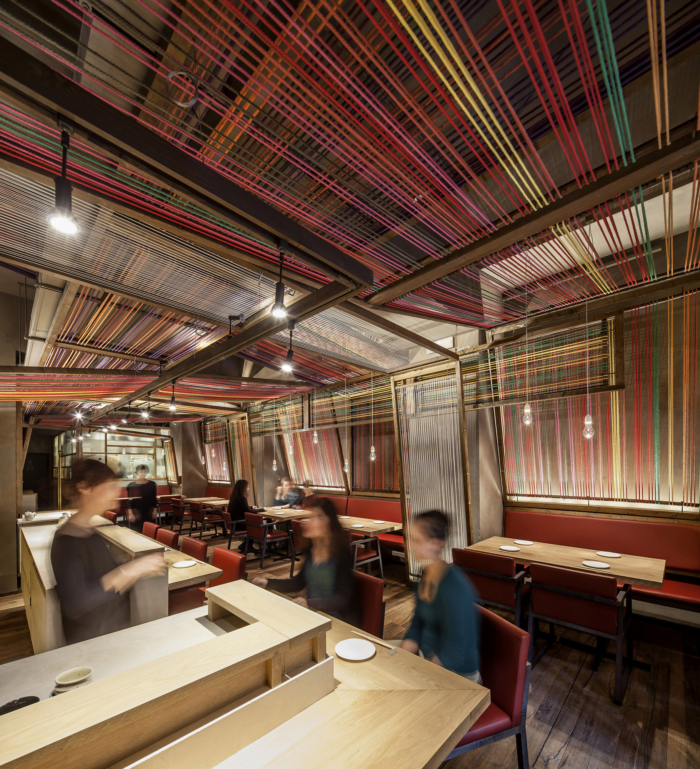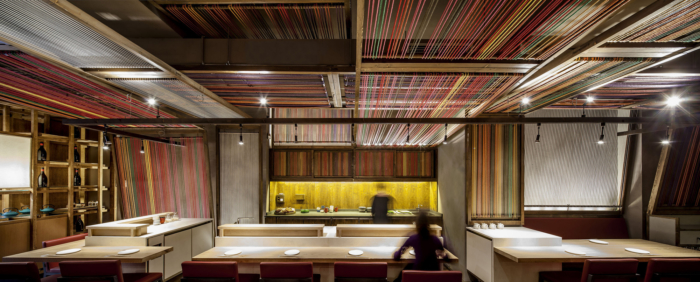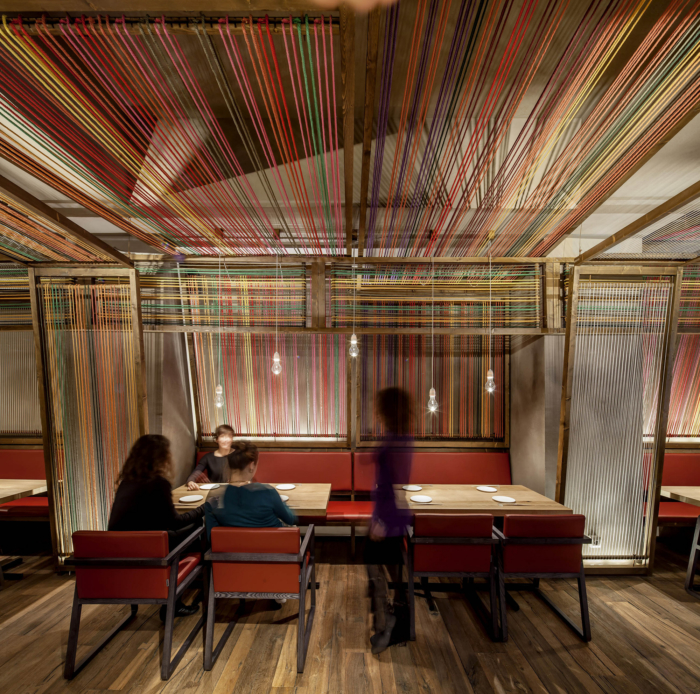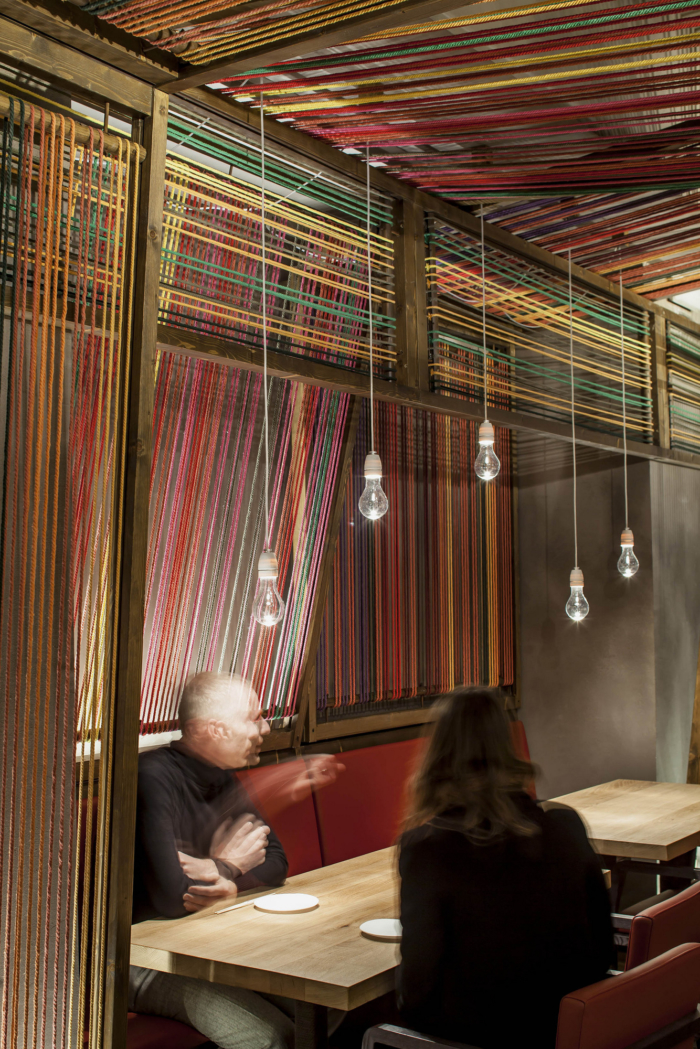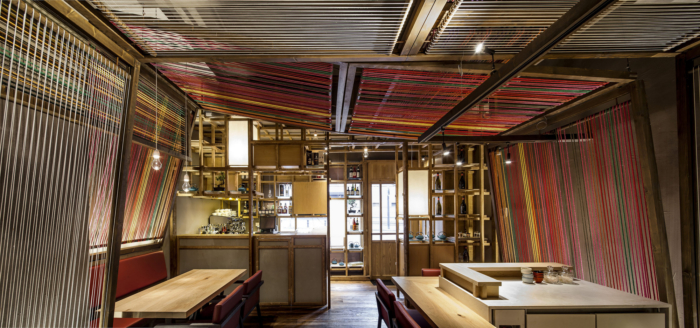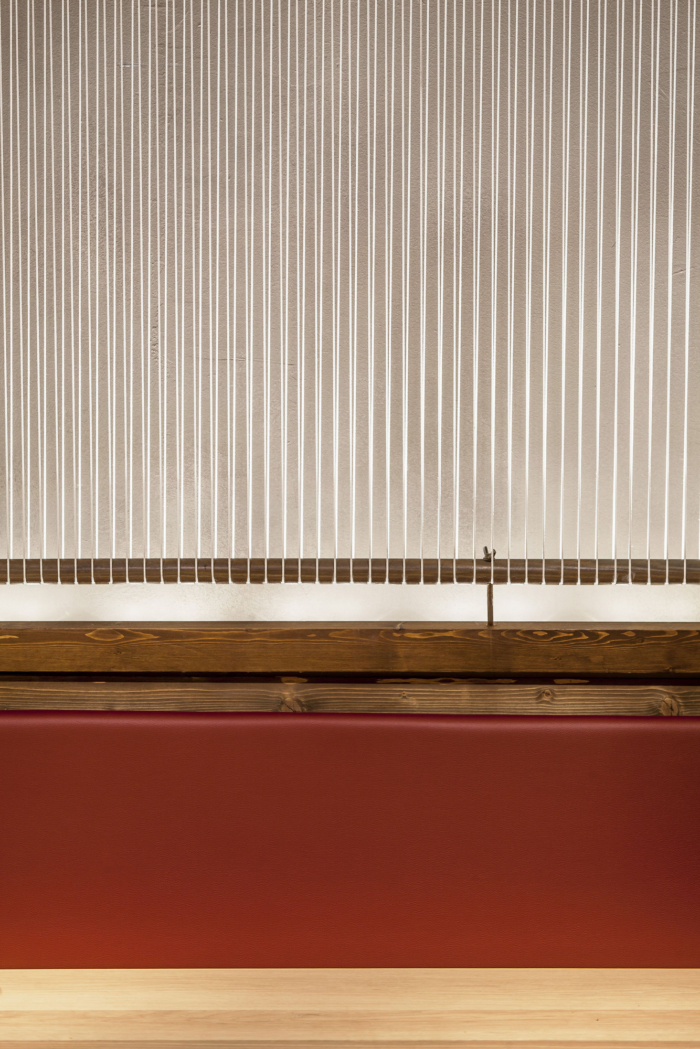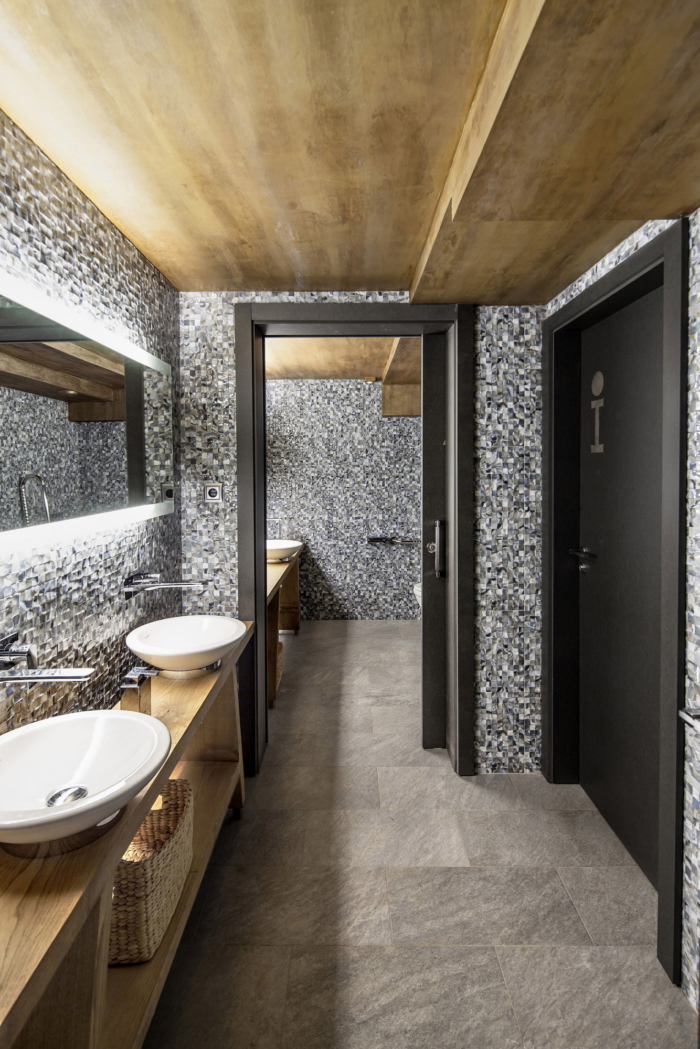Pakta Restaurant
EL EQUIPO CREATIVO has designed Pakta Restaurant in Barcelona, Spain to unite two cultures through the use of brightly colored Peruvian-style looms against the backdrop of a Japanese-style tavern.
After the success of the restaurant Tickets and the cocktail lounge 41o, the tandem formed by Albert and Ferran Adria and the Iglesias bothers has once again counted on El Equipo Creativo to design their latest gastronomic project: Pakta Restaurant. A small locale was chosen in the same area close to the Avenida Paralelo in Barcelona, on the slope going up towards the Mercat de la Flors and Montjuic Park. The novelty is in the gastronomic offer, based on the nikkei Peruvian – Japanese cuisine and, of course, the design of the space, which, as in previous projects by Oliver Franz Schmidt and Natali Canas del Pozo, is a re ection of the gastronomic concept.
Pakta Restaurant
In the Quechua language of Peru Pakta means “union”; in this case the union of two cultures and their respective cuisines . The interior design created by EL EQUIPO CREATIVO emerges from this same idea, considering that Japanese cuisine is the basis of the nikkei gastronomy but wrapped in Peruvian tastes, colours, traditions and ingredients. With this in mind, the basic elements of the restaurant such as the bars, the kitchen and the furniture are designed with a clear reference to the architecture of the traditional Japanese taverns.
An explosion of colours evocative of Peru envelopes the space. This chromatic “second skin” is achieved by use of a direct reference to the Peruvian loom, offering a surprising combination of colours which contrast with the austere Japanese design, and underlining the deep-rootedness of this artefact in Peruvian arts and crafts. However, the re-interpretation of the Peruvian loom goes further, sequencing its own elaboration process on the walls of Pakta, transforming this at surface to offer a tridimensional character to the space, adding vitality and movement and blurring the limits which mark the locale. The traditional Peruvian weaving looms are wooden mechanisms where colored threads intertwine in various directions, forming a suggestive tridimensional space which generates an attractive atmosphere transformed and reinterpreted in Pakta.
The final result unites the re-interpretation of these two cultures–Peruvian and Japanese– by means of some of their most emblematic traditional elements, creating a visually potent but balanced solution, at once spontaneous and rational, hilarious and silent, surprising but strangely familiar, as is the nikkei cuisine itself.
The Looms
The looms envelope the entire dining area by means of three different transversal sections which repeat themselves, varying their tonality and creating a rhythm of variable colour. A few longitudinal pieces placed in different positions and at varying heights help to weave the space and create a sense of enclosure.
The colored looms are designed one by one, intercalating full spaces and empty ones, areas of great chromatic intensity with other more neutral shades, warm colours (reds, golds) with cooler tones (greens and browns). The cloth used on the looms is cotton of hand-made appearance, rough touch and dull finish. In contrast to the profusion of colour, the loom is white and is constructed in a fine, shiny material, thereby becoming a light-reflector.
The structure of the looms is a double wooden frame. The woven cloth revolves around the interior frame, which is joined to the exterior frame by a tensor which permits the threads on the loom to be tensed whenever necessary.
Design: EL EQUIPO CREATIVO
Photography: Adrià Goula

